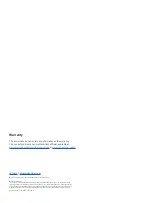
STEP 9
STEP 9
A
B
STEP 9
STEP 9
STEP 9
A
B
C
Fig. 36
Setup mode
Progressive-line system with reservoir monitoring using run cycle counter
1
Refer to
steps 1–5
on
.
2
To use
rCC
(run cycle counter), select
∇
(
Fig. 36 A
).
If
Δ
is pressed by accident, continue to press
Δ
until
rCC
displays.
During run cycle, controller looks for signal from proximity
sensor normally fitted to feeder system ensuring complete
machine is lubricated adequately.
Some calculation is necessary to calculate cycles required
through specific feeder system used.
3 t
(time out ) appears in display indicating alarm will activate if
sensor does not send signal to controller within set time. This
function is used when flow proximity sensor is installed on feeder.
Piston activates sensor within feeder and sends signal to
controller. Controller resets time out and starts counting down to
start monitoring process. This function continues to work while in
run cycle mode. It is important to set time out greater than cycle
time of specific feeder. This also depends on pump being used.
Press
Δ
to increase time out to desired setting.
4
Press
ENTE
R to confirm (
Fig. 36 B
).
In example, time out of 45 seconds is confirmed.
5 n-O
(normally open) appears in display. This indicates if sensor is
normally open or normally closed. Press
Δ
to choose between
n-O
or
n-C
.
6
Press
ENTER
to confirm choice (
Fig. 37 A
).
7
Press
ENTER
again to confirm use of run cycle counter
(
Fig. 37 B
).
8
Press
Δ
to increase number of cycles required (
Fig. 37 C
).
Remember 1 cycle represents complete cycle of feeder.
For example, should 6 port feeder be used, 1 cycle indicates
feeder has lubricated all 6 points. 1 cycle is not equal to 1 minute
run time. The larger the feeder, the longer it takes to reach 1 cycle
9
After selecting amount of cycles, press
ENTER
to confirm.
Fig. 37
22
23



































